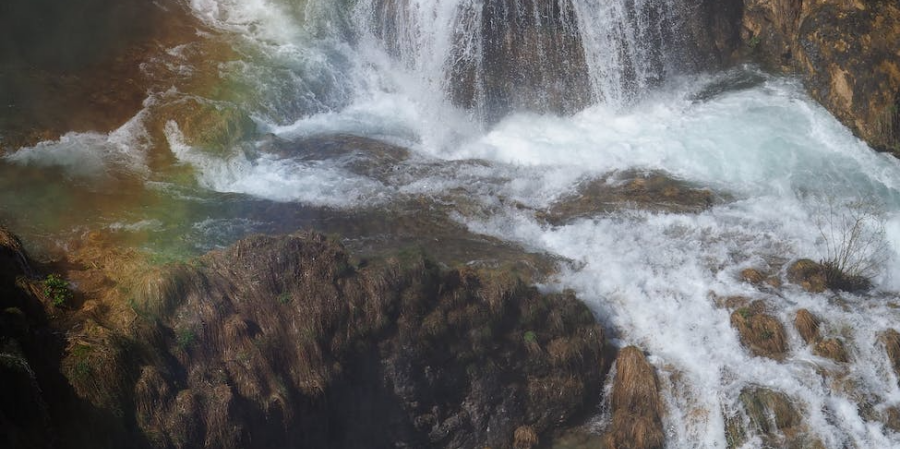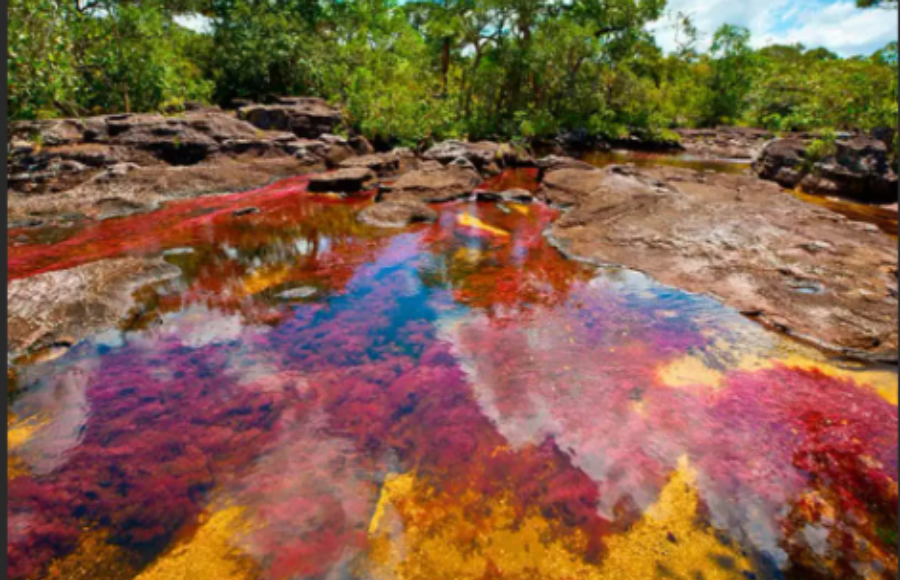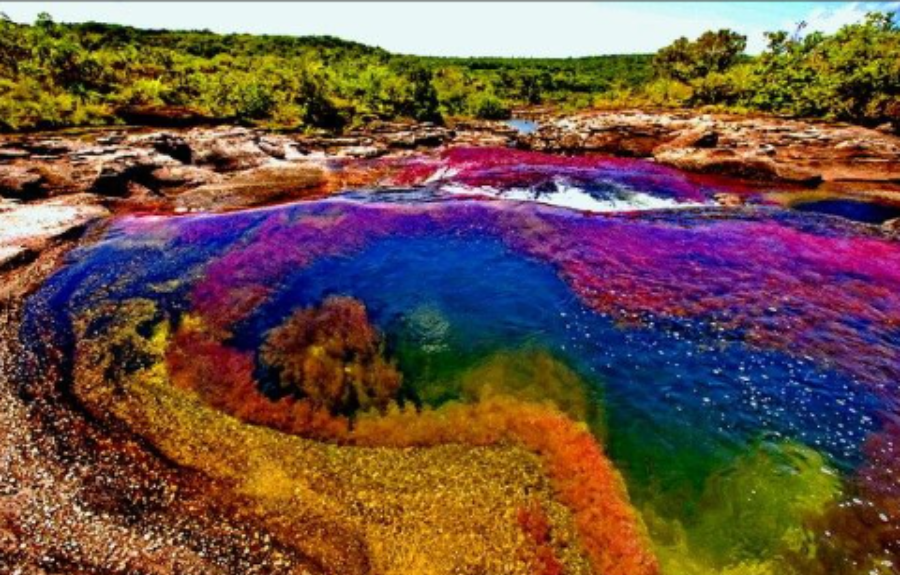


Found 170km south of Bogotá, three different environments - the rough Andes mountains, the general Llanos fields and the rich Amazonian wilderness - meet in the far off wild of focal Colombia's Sierra de La Macarena Public Park.
One of the world's most spectacular natural wonders can be found if you follow the winding Guayabero River up a fork deep within the park's southern fringes: Caño Cristales, a 100km-long series of perfectly clear cascades, waterways and streams that detonate in a rainbow of varieties for a while every year.

The" Swash of Five Colors" is Colombia's Serrana de la Macarena public demesne's62.1- afar-long swash in the Meta fiefdom. During the many months when the rainfall is favorable, the swash bed displays pictorial tinges of red, unheroic, green, blue, and black. Although the colors can be seen as early asmid-May and sometimes into December, June and November are when they're at their most vibrant. The swash's submarine shops, Macarenia clavigera, a species of the Podostemaceae family of riverweeds, produce the colors during their reproductive cycle. The swash runs presto and grandly during the wet season, precluding sun from reaching the shops in the foundation. The shops can not survive without enough water during the dry season. Since the seasons infrequently change, callers who want to see the bloom must visit the public demesne during the months when it's at its stylish.
There's no other place on earth where the miracle occurs. The Andes Mountains, the Amazon, and the Orinoco basins all meet in this region, which is a biodiversity hotspot and home to multitudinous aboriginal species. The country's tourism board claims that due to the large number of callers, preventives had to be taken to guard the area. The agency also set a diurnal limit of 200 excursionists and" oppressively confined development" of tourism structure in La Macarena, the nearest small city to the public demesne.
Despite the cap, environmental authorities closed the area in December 2019 to cover the swash because of the high number of excursionists. The conclusion was also stretched out because of the epidemic.
For a veritably long time, until its returning in June this time, Caño Cristales did not get one single guest. Carlos Lasso, a elderly experimenter at the Humboldt Institute, a Colombian association in charge of the country's biodiversity, countries," The area is a hotspot of biodiversity."" It's where birth factors of the Andes, Amazon and Orinoco coliseums combine. There are multitudinous aboriginal species and types of limited rotation. For numerous times, the Serrana de la Macarena region was a war zone; still, deforestation is now progressing at an intimidating rate.
With further than 40 soccer fields' worth of trees cut down on a diurnal base, deforestation is one of Colombia's most burning issues, and the La Macarena region is no exception.
Deforestation influences the exemplifications of rush, and the region has seen lower rain, meaning the water of Caño Cristales can abandon clear to a cloudy brown, which could eventually kill off the Macarenia clavigera. Lasso stated," It's a delicate area to cover because it's so far from any megacity."
He added," Although the government is doing well, there's always room for enhancement," and that fresh demesne officers were needed to guard and cover the region.
